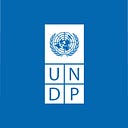Bangladesh climate migrants build new lives
“Riverbank erosion grabbed our home and all the belongings,” says Mosharraf Hossaion.
Rising sea levels are increasing the erosion caused by the Meghna river. A few years ago, erosion claimed his house, livestock, and lands. Mosharraf lost everything — even the utensils he used for eating.
He was forced to move, which caused his family considerable hardship and distress.
Tidal surges and more frequent and stronger cyclones have added to the challenges facing Bangladeshis who live close to the sea.
According to the Bangladesh Water Development Board, several hundred acres of arable land, many houses, markets, mosques, schools, roads, and cyclone shelters have been lost in the last couple of years.
But it’s not just coastal residents who are having their lives overturned by climate change. With two thirds of the country less than five meters above sea level, Bangladesh is one of the most vulnerable countries. A 2016 Building Resources Across Communities (BRAC) report predicts 27 million Bangladeshis will be at risk of sea level rise by 2050.
In response the Adaptation Fund has recently approved US$10 million for a project to protect vulnerable island communities. It’s being jointly carried out by UNDP and the Ministry of Environment, Forest and Climate Change.
Nizam Maji also lost his home to seawater. He said displacement makes their lives miserable as they not only lost their house and belongings, but also their family roots.
Internally displacement is common in Hatiya as a vast area of the island is being devoured by the riverbank erosion caused by sea level rise.
Erosion is also continuing to take place in many points of the Hatiya Island, putting many islanders at the risk of displacement.
Nizam Maji said after losing agricultural land and houses to the erosion, many families of Karingchar, Boyarchar and Nolerchar of the island left their areas and have taken refuge in cyclone shelters.
Sea level is on the rise along the Bangladesh coast like other parts of the world. Official data shows sea level rise was observed at 5.73 mm per year at Char Changa station in Hatiya while Hiron point in the Sundarbans at 3.38 mm per year. The coastal areas along Patuakhali and Bhola districts and Hatiya Island are very high vulnerable due to sea level rise while the coastal areas along the Sundarbans and Barguna are high vulnerable.
Meanwhile, the coastal communities and islanders in Bangladesh are realizing that sea level is increasingly affecting their lives and livelihoods as weather becomes more extreme and frequent
Abdul Khaleque, a resident of Manpura Island in Bhola has experienced firsthand the effects of rising sea levels.
“Seawater was far away from our island in the past, but now I feel the sea is coming near us. One third land of our island has gone under water in the last 20 to 25 years,” he says.
Now, he said, seawater enters the middle part of Manpura Island through canals affecting a vast tract of croplands. “Due to the sea level rise, salinity is damaging our croplands, putting our lives and livelihood in trouble.”
According to a new study of the International Food Policy Research Institute, sea level rise will force nearly 200,000 coastal people to move from their homes.
With the rise of climate migrants, the Forest Department is leasing its fallow land outside the embankments of the islands to the landless, poor and displaced people for 10 years.
The land is being distributed under the Integrating Community-based Adaptation into Afforestation and Reforestation Programme, jointly initiated by the Forest Department and UNDP.
Divisional forest officer Towhidul Islam said there are huge tracts of Forest Department fallow lands on the islands.
If the land is leased to the vulnerable families, he said, it could be protected from encroachment as well as helping poor families address their dire situation.
Nine hectares of fallow land has been distributed among 45 families in Hatiya Upazila. Forty five ponds were established on the land and each family got one pond to farm fish. Under the programme, fruit-bearing and timber saplings were given to the families to plant. The families were also trained on how to rear ducks and cultivate vegetables on the banks of their ponds.
“I got a pond and a piece of land under the programme for 10 years. Now I am farming fish in the pond and cultivating vegetable on my land, and have started reaping benefits,” said Ferdousi, who’s living in Tanbazar area of Hatiya.
Ferdousi said she has already sold fish from her pond and hopes that she will be able to increase sales within next three or four months.
Towhidul said the Forest Department allows the islanders to utilize the public land for 10 years on lease and it is expected that the lease will be renewed based on the success of the programme.
Photos by UNDP Bangladesh. Photo editing by Rico Cruz, photography intern at UNDP New York.
